The 5 Cheese Types and How to Store Them
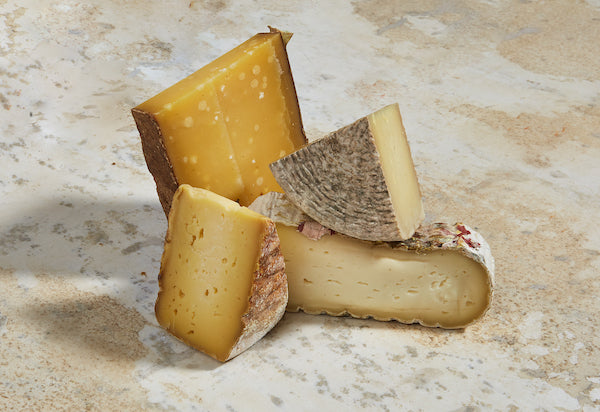
Have you ever been in front of a cheese counter, unsure of where to begin? Don’t worry, we can help with that. Understanding the 5 basic types of cheese will help guide you at the cheese counter and make it easier to go home with the perfect selection. No matter the type, try to only buy as much cheese as you can eat within a few days. If you find yourself with a lot of cheese, we’ll help you keep it fresh.
Let’s walk through the 5 basic cheese types, and how to store them!

- Fresh Cheese, like Burrata
Shelf-life: 1 – 3 Days
Store in: Formaticum Cheese Storage Sheets
This category includes anything that’s unaged and has no rind (think cheese curds or ricotta). These cheeses have the highest-moisture content, which means they have a soft texture that’s either spreadable like chèvre or crumbly like feta. It also means they’ll spoil quickly, so eat them just a few days after opening. The only exception is Feta will last a couple of weeks when stored in its brine.

- Bloomy Rind Cheeses, like Casatica di Bufala
Shelf-life: 5 – 10 days
Store in: Formaticum Cheese Storage Sheets
Any cheese with a white, pillow-y outside is in the bloomy rind family. A lot of these cheeses have unctuous, buttery flavors that develop notes of mushrooms and earth near the rinds. They can be soft and oozing like camembert, or dense and cakey like Humboldt Fog. Their shelf-life depends on their ripeness: if it’s oozing, eat it within a couple days. If it’s firm, you have more time. Keep them in storage sheets to prevent them from getting squished.

- Washed Rind Cheeses, like Gubbeen
Shelf-life: 7 – 14 days.
Store in: Formaticum Cheese Storage Sheets or Formaticum Cheese Storage Bags
If you see a cheese with a red, pink, or orange rind, you can safely assume that it’s stinky. These are washed-rind cheeses, and while their funky aroma can be strong, they’ve got a much bigger bark than bite. Underneath the stinky rind, it’s usually much milder with a custard-y interior that melts in the mouth with broth-y, savory, and beefy notes. Store soft, gooey wheels in storage sheets, and firmer, more durable ones in bags.

- Aged Cheeses, like Moringhello
Shelf-life: 3 – 4 weeks
Store in: Formaticum Cheese Storage Bags
This is the broadest category of cheese, and includes everything from semi-firm Havarti to crunchy Parmigiano Reggiano. The oldest wheels have the lowest moisture content and are great for any traveling turophiles, since they’ll do fine outside of refrigeration. They’re very durable and can even develop crunchy crystals as they age. Younger ones will last 2 – 3 weeks, while older ones like Parmigiano can keep for over a month.
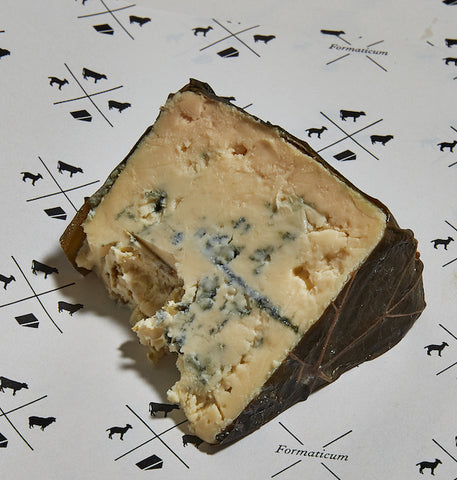
- Blue Cheeses, like Rogue River Blue
Shelf-life: 1 – 2 weeks
Store in: Formaticum Cheese Storage Bags
The most polarizing of all cheeses: you either love it or you hate it. Blue cheeses have a mold stirred in to the vat, creating pockets or streaks of blue, gray, or even green. These pockets need oxygen to grow, so many blues are pierced with needs to create airflow. They also have extra salt to help the molds develop. Soft, creamy blue cheeses like Cambozola will stay fresh for a week, and firm, crumbly ones like Stilton can last twice as long.
4 Tips for a Perfect Cheese Plate
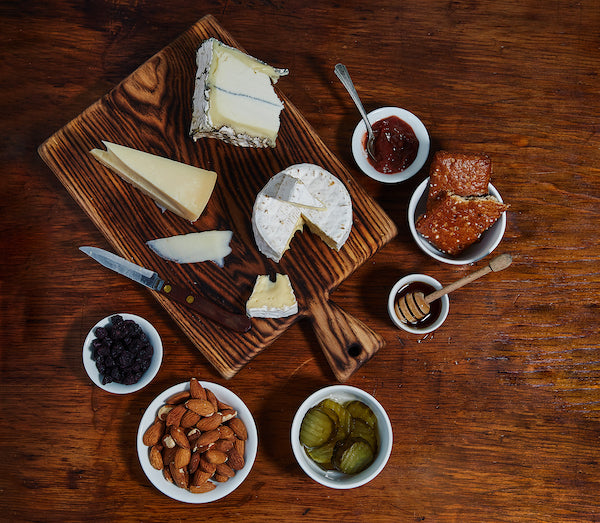
4 Tips for a Perfect Cheese Plate
There’s nothing like those first ooh’s and ah’s from your guests when they catch sight of a beautiful cheese spread. Once you know the basic rules of building an impressive cheese platter, they’re actually very easy to throw together. Here are 4 rules to help you build a beautiful cheese board every time.
1. Choose 3 - 6 kinds of cheese
This will give you enough variety, without overwhelming your palate. Look for a variety of milk-types, styles, ages, and textures. If the cheese plate is an appetizer, you want to feed each person 1 - 2oz of cheese total. If it’s the main course, aim for 3 - 4oz.
2. Add a variety of accompaniments
Get creative and pair your cheese with a mix of sweet, savory, juicy, and crunchy items. One accompaniment per cheese is a great rule of thumb. Keep messy things like olives and jams in a separate bowl to keep it from contaminating the cheese.

3. Bring everything to room temperature
Refrigeration dulls the flavor and changes the texture of cheese, so let the soft ones sit out for 20 minutes, and firmer wedges for up to an hour. Accompaniments taste better at room temperature as well.
4. Cut the cheese just before serving
You don’t need to break down every wedge, but slicing off a few pieces will help guide your guests and keep your platters pretty. Check out our guide to cutting cheese here, and remember to use a different knife for each cheese so you don’t mix flavors
Got some leftovers? Just wrap each wedge of cheese in Formaticum.
What is Raw Milk Cheese and Why Should You Eat It?
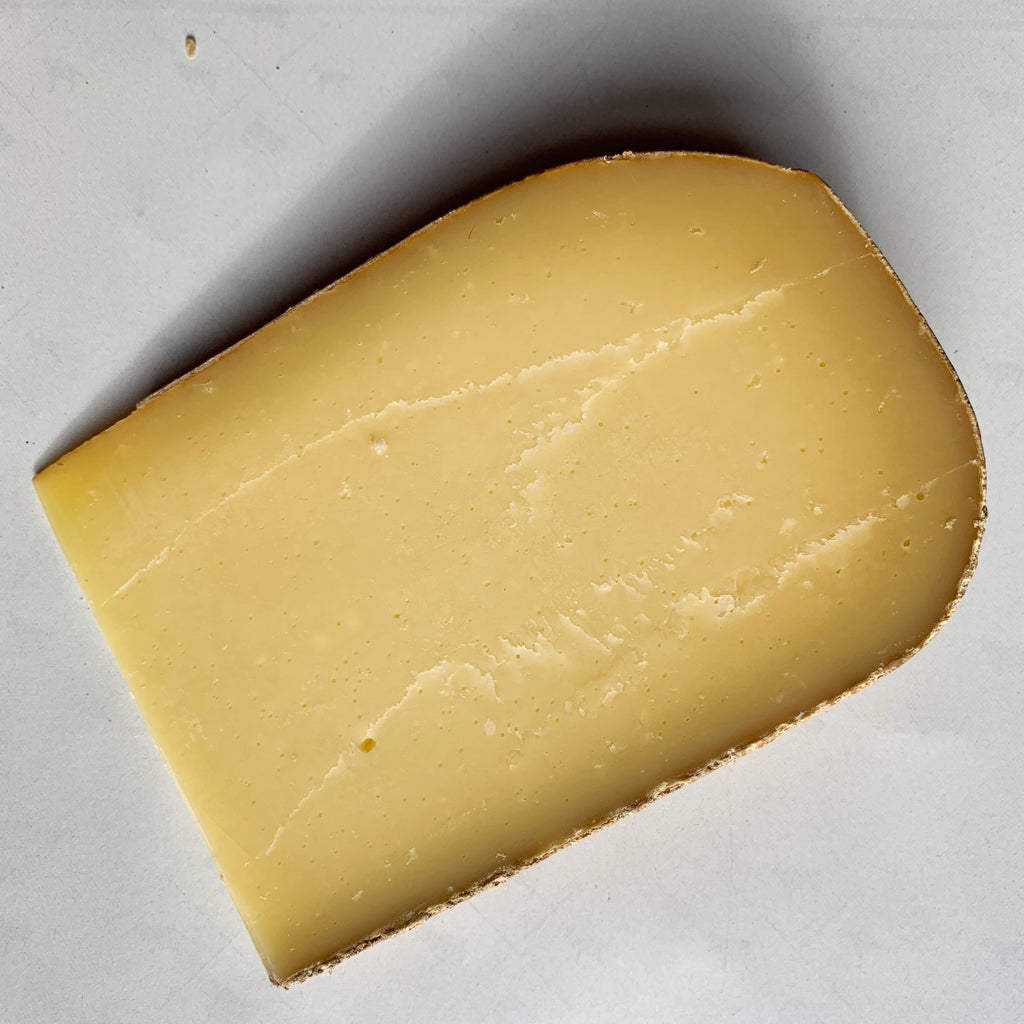
Have you ever crumbled off a chunk of classic Parmigiano Reggiano and wondered what made it so delicious? Well, one reason why this Italian cheese is so delightful is because it is made with raw milk. But what exactly does that mean? Raw cheese is made with milk that hasn’t been pasteurized or heated in order to kill off bacteria. Pasteurization can be beneficial since it can eliminate any potentially harmful pathogens, but it can also destroy native cultures that contribute to a cheese’s flavor, texture, and complexity.
When made correctly, raw milk cheese is safe to eat and can result in some of the tastiest and most traditional cheeses out there. That’s not to say that pasteurized cheeses are any lesser, we just think it’s time you try some raw milk cheese too.
Here are a couple of our favorite raw milk cheeses.
Parmigiano Reggiano
There are a lot of look-a-likes made in the United States masquerading under the shortened title of “Parmesan”, and these versions are usually pasteurized. The Italian original is rich with savory, umami flavors and crunchy crystals. It’s obviously delicious on pasta, but we recommend breaking chunks off of a wedge and pairing with Champagne.
Gruyère from Switzerland
You may have encountered this famous Swiss cheese on top of French Onion soup or inside a grilled cheese, but have you ever tried it on its own? With notes of toasted hazelnuts and brown butter, this classic cheese is delicious sliced razor thin and dolloped with onion jam.
Roquefort from France
Some say Roquefort is the original blue. Legend has it that centuries ago, a shepherd became distracted by a young maiden just after sitting down to a lunch of cheese and bread in a cave. He went after her unsuccessfully, only to return days later to some moldy bread and blue-speckled cheese. Upon tasting it, he fell in love with the punchy flavor—and Roquefort was born. While we don’t know if that legend is true, we do know that the herbaceous, spicy notes in this sheep’s milk beauty tastes lovely with Sauternes.
Pleasant Ridge Reserve from Uplands Cheese (pictured above)
Made in the style of French Beaufort, this Wisconsonian is the most awarded cheese in America. Cheesemaker Andy Hatch uses only native cultures to make this firm, snackable cheese, resulting in notes of grass, sour cream, and melted leeks. Try it on its own, or pair with some salami for a perfect ploughman’s lunch.
Grayson from Meadow Creek Dairy
This American original is similar to Italian Taleggio, but it comes from Virginia. The bright orange rind is an immediate signifier of the pungent nature. Underneath, it’s much more mild with flavors of steak, leeks, and custard. Try it alongside a Belgian Dubbel: the sweetness mellows out the funk.
Bayley Hazen Blue from Jasper Hill Farm
Hailing from Vermont, Bayley Hazen is a fudgy blue similar to Stilton, which is actually legally required to be pasteurized by English law. This raw-milk, American version has deep earthy flavors and a slight fruity sweetness, similar to dark chocolate. We like it best with a juicy IPA, which teases out the tropical notes.
Reading Raclette from Spring Brook Farm
Another Vermont native, this firm, meltable cheese is modeled after Swiss Raclette, which is traditionally served heated under a special grill and scraped onto potatoes. It’s a wonderful melter, but it also shines on a cheese platter. Bring out the notes of onions and meats with a swipe of whole grain mustard and rye toast points.
How to Host a Vertical Cheese Tasting At Home
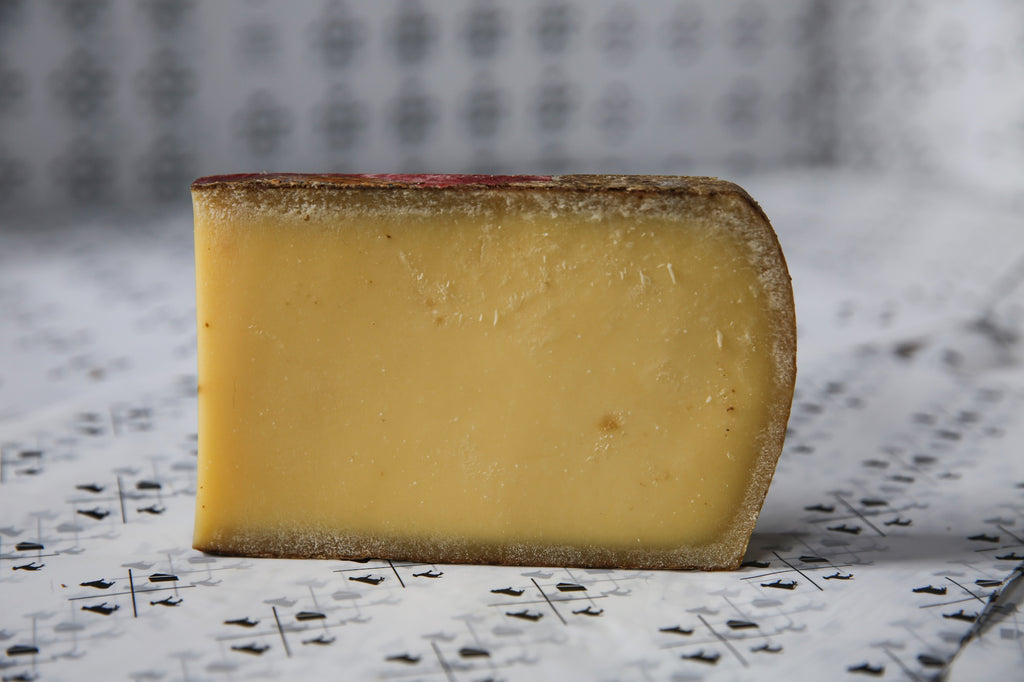
A vertical cheese tasting is a sampling of the same kind of cheese at different ages. It’s a delicious way to experience the subtle ways the seasons can affect a cheese’s flavor. It will also help you become acquainted with the many particular flavors that a specific cheese has to offer and help you learn how to talk about them, too.
To set up a vertical tasting, you just need to choose one specific cheese and buy a wedge at a few different ages. Ideally, it should be the same cheese from the same creamery, so you can see how dramatic or subtle the differences are, but since this is not always possible a good alternative is the same cheese. For example, get yourself a Comté at 6 months, 12 months, and 16 months. Some of these wedges will be made with summer milk when the cows are at pasture and eating a fresh diet of herbs, grass, and flowers, while the other will be made with winter milk when the cows are eating dry hay.
Here’s how to set up a vertical tasting for all your friends:
- Choose your cheese, and buy several different ages. Give everyone just under an ounce of each cheese, so they have plenty to taste.
- Gather your friends for a round-table style discussion. We recommend keeping it to fewer than ten people.
- Print out some facts about the cheese so you can learn all about it together. You’ll also want to provide each guest with paper and a pencil so they can take notes.
- Serve something bubbly, like sparkling wine or seltzer, to cleanse your palate between bites.
- Begin with the youngest cheese, and move towards the oldest.
- Once the tasting is over, be sure to wrap any leftovers in Formaticum to keep them fresh.
If you host a vertical cheese tasting at home, post a picture on Instagram and tag us! We’d love to see how it goes.

Welcome to the formaticum Blog
Our home to share our cheese chronicles and more.
Categories
Recent Posts
Meet Your Monger: Carol Johnson of Monger's Palate
A Brief History of American Cheese
Connect with Us
Join the Newsletter
Sign up to receive special offers, new product releases, updates from the cheese shop, and more.









